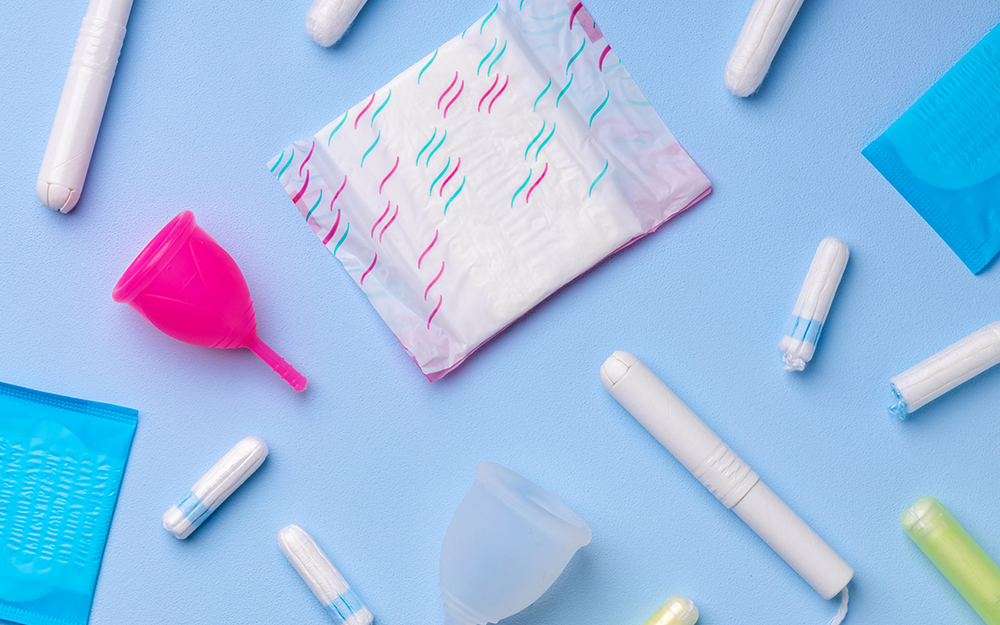Cedars-Sinai Blog
Timely Advice for the Tampon Shortage
Jul 13, 2022 Koren Wetmore

It's one thing when your online order is delayed by supply chain issues. But your tampon supply? That's a problem. It's one that women nationwide are experiencing as rising prices and a tampon shortage have them scrambling to find—and afford—these essential products.
Like other items on the ever-growing list of supply chain woes, the dwindling tampon inventory has been blamed on the rising cost of raw materials, labor shortages and skyrocketing fuel costs in transporting goods.
Eventually, supplies will return to store shelves. Until then, if you or someone you love menstruates, you need a plan to safely navigate the tampon shortage.
We asked Dr. Elizabeth Kim, associate residency program director for Cedars-Sinai's Department of Obstetrics and Gynecology, for guidance. Here's her advice for getting through with your health and budget intact.
"You always want to use the lowest-absorbency tampon needed and never leave one in for more than 8 hours."
How can I make my tampon supply last longer?
Dr. Elizabeth Kim: You can conserve your supply by alternating the use of tampons with another product such as a menstrual cup or pads. For example, you might use tampons for daytime and a pad at night. Alternatively, use tampons only for certain activities such as swimming.
Another tip is to try mapping out what your period is like. As women, we don't necessarily track our cycle—things like, 'on my third day I have a heavier bleed'—but if you pay attention to your body's menstrual pattern, you can determine how best to use the supply that you have. If it's a light cycle day, you can use a panty liner. If it's a heavier day, you can use your tampons.
What about using expired tampons?
EK: If you look on the package, you'll find an expiration date. Tampons are normally good for quite a long time. If they're expired, don't use them.
Why can't I just use more absorbent tampons that last longer?
EK: You may think, "Oh, if I use a super tampon, then I won't go through as many in a day." But you always want to use the lowest-absorbency tampon needed and never leave one in for more than 8 hours. In fact, you should aim for changing tampons every 4-6 hours. That helps to prevent toxic shock syndrome (TSS).
TSS is caused by the bacteria Staphylococcus aureus or sometimes by group A streptococcus. These naturally occurring bacteria are found on the skin and can transfer to a tampon when it's being inserted.
The vaginal environment is a warm, moist space that encourages bacterial growth. So, when a tampon is left in for too long, the transferred skin bacteria can multiply and spread, reaching quantities too large for your immune system to fight off.
What should I do if I experience symptoms of TSS?
EK: TSS causes symptoms such as high fever and a rash that starts on your palms and the soles of your feet. It will spread until it becomes a whole-body rash. If that continues, you'll have hypotension (dangerously low blood pressure), vomiting, diarrhea, muscle aches, confusion and eventually shock—which can lead to death.
If you have a fever and notice the rash, go to the nearest emergency room immediately. Your condition can change rapidly from stable to unstable and become life-threatening.
Which tampon alternatives do you recommend?
EK: Absorbent "period" underwear, pads and menstrual cups are all options. The absorbent underwear is probably the easiest to use because you don't have to worry about leakage. The menstrual cup can offer a similar feeling of freedom to what you get from a tampon. Plus, the underwear and the cups are economical, because you can use them again and again.
However, avoid using any product or foreign object that has not been approved by the Food and Drug Administration.



